UCI Libraries opens exhibit celebrating 400 years of Shakespeare’s First Folio
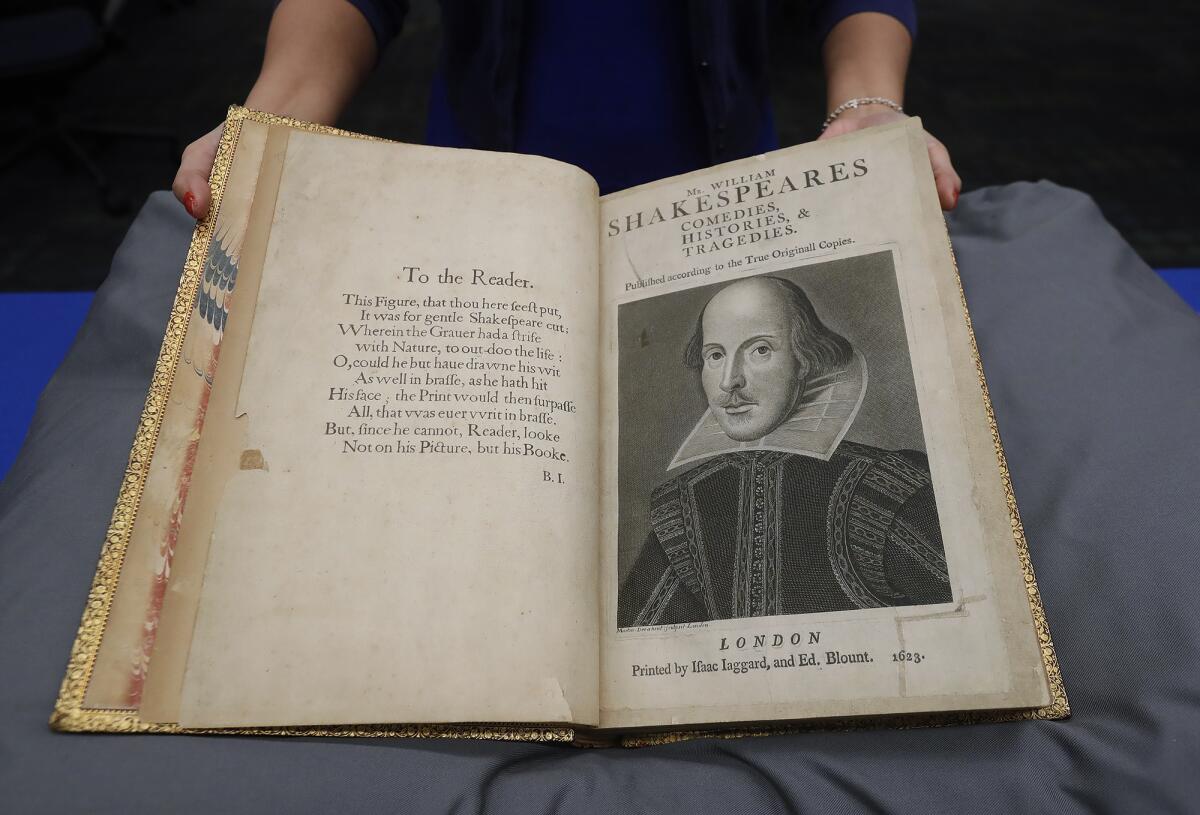
- Share via
It’s a rare opportunity to get a glimpse of William Shakespeare’s First Folio — the first collection of his works, published posthumously in 1623.
According to the British Museum, only about 750 copies of Shakespeare’s First Folio were ever printed, and 233 of those are currently known to have survived worldwide.
The museum owns five copies. UC Irvine owns one. And as of Thursday, UCI Libraries opened its latest exhibit, “400 Years of Shakespeare’s First Folio,” which likewise featured a rare opportunity to witness the volume that is said to be the sole reason 18 of the Bard’s plays survived history.
University librarian Lorelei Tanji said UC Irvine’s First Folio is one of only 30 complete copies in the world and rests at the school thanks to a donation from university alumnus Patrick Hanratty in 1986. The pinnacle of Western literature is typically kept in a vault, but in honoring Hanratty’s wishes, community members are able to see it during special public events, such as on Thursday night when the exhibit opened.
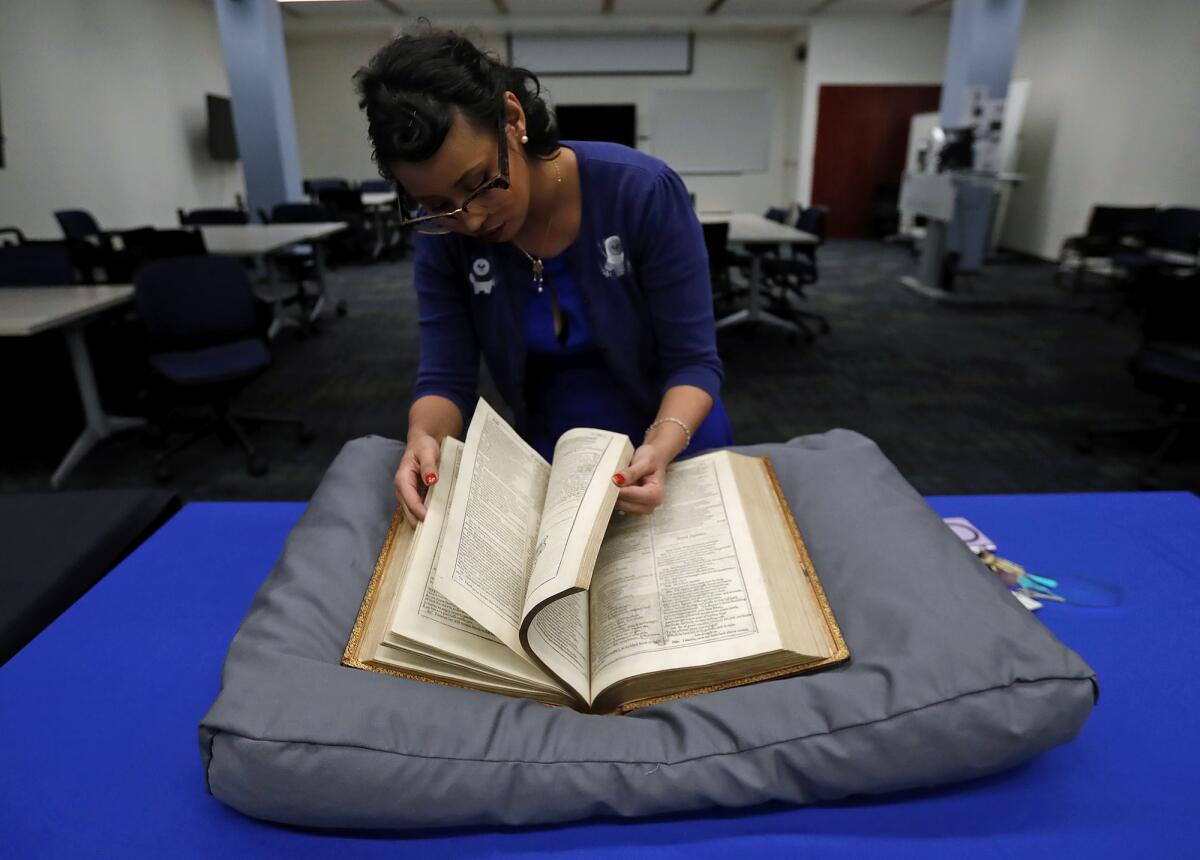
Tanji noted that the current value of UCI’s First Folio is unknown but that another copy of it went for nearly $10 million in 2020, making it the most expensive piece of literature ever auctioned.
“After the Bible, [the First Folio] is the most influential single book because it has 36 plays in it. It is the most influential collection of literature. The Bible is bigger. It has more words, it has more readers, and it is an international text. But after the Bible, this is the most imitated, translated, performed, satirized, parodied — it’s just very powerful,” said English professor and co-director of the New Swan Shakespeare Center Julia Lupton.
“Having it in folio form was a way of presenting [Shakespeare’s] work as literature. You couldn’t perform the text from this because it is really heavy and cost the equivalent of around $200 back in the day; it was really meant for the libraries,” Lupton said. “It’s next to your Homer and your Virgil and other great works.”
The exhibit, which opened with a discussion from exhibit curator Derek Quezada, will now be on display in the lobby of the Langson Library through December, though the actual First Folio will not be part of the physical display with respect to its value and age. Thursday was the only opportunity to physically view the rare item, though Tanji said there will be detailed reproductions of the First Folio and its features on display.
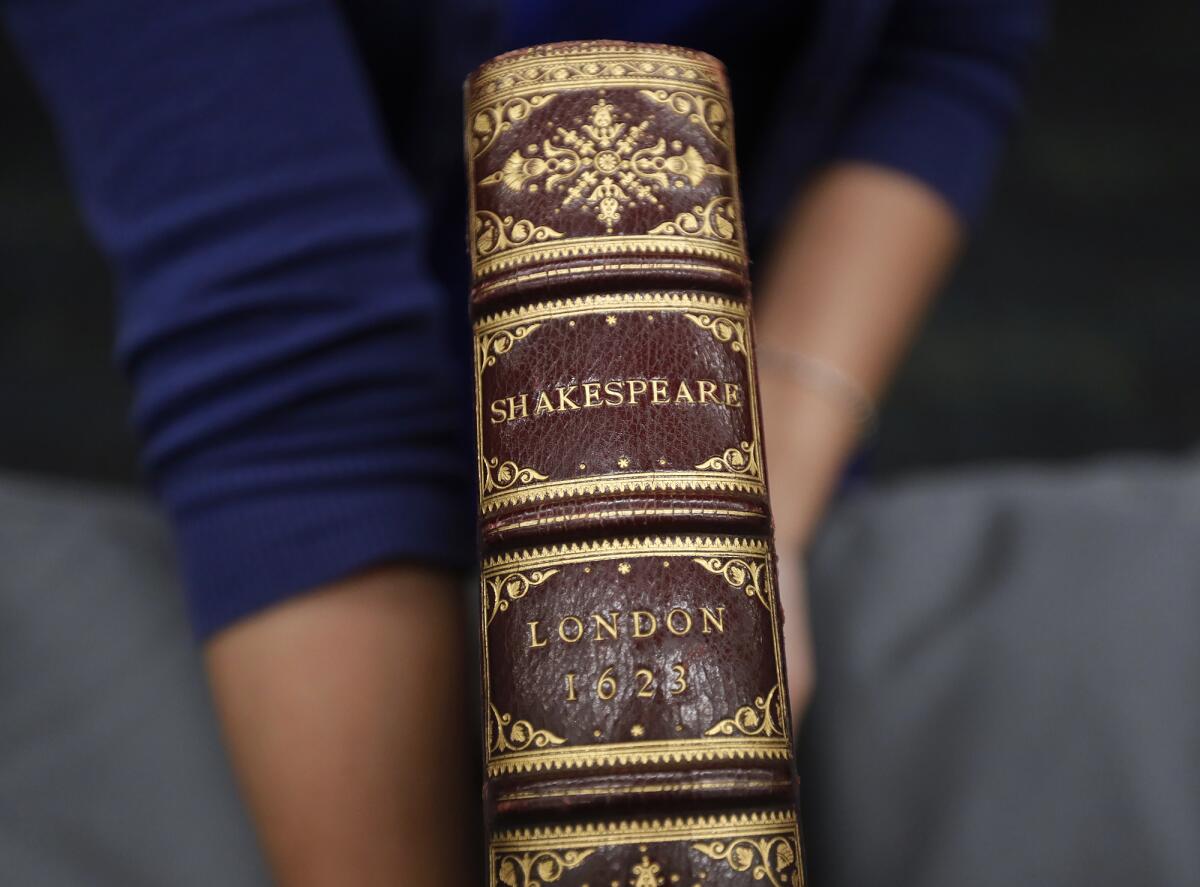
Quezada said the exhibit didn’t initially come together as a celebration of the Bard of Avon but from the “organic growth” that came with the discovery of all the material already existing within the university’s collections.
“Each year that I’ve done this, I’ve tried to find more material to contextualize [the First Folio] and also to keep myself entertained. Through that process, I discovered we had a whole bunch of rare books that Shakespeare would’ve either owned or could have influenced his writing,” Quezada said. “There’s a number of Portuguese pastoral romances that he had access to and ... literally took some of the plot lines of and teased into some of his own plays.”
Quezada said he pitched the exhibit toward the end of his tenure with UC Irvine back in the summer of 2022, describing it as his “swansong.”
The oldest books in the exhibit are from 1530, and the newest from 2014. Quezada said he used the First Folio as a sort of central fulcrum for the exhibit — “this anchor point in history, where all of these books and influences and productions of history and culture influenced Shakespeare one way or another and that led to the publication of the First Folio.”
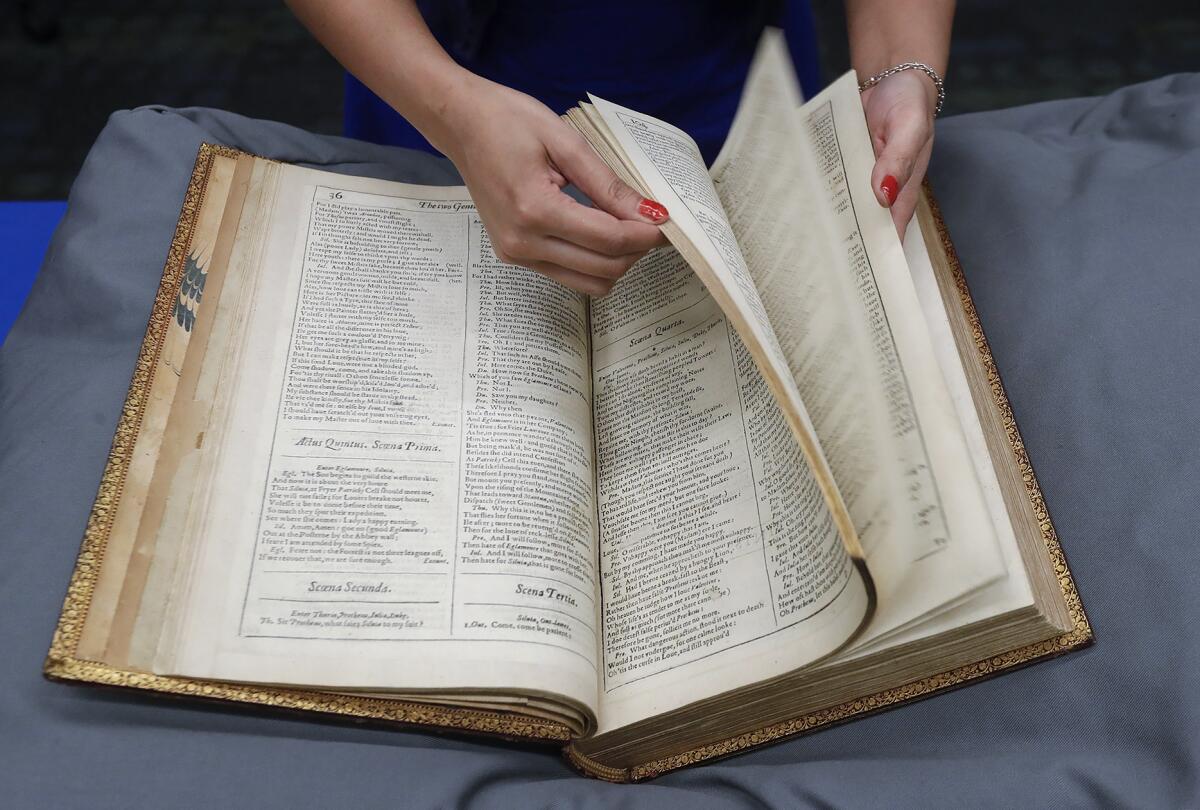
But included in the exhibit is also how Shakespeare was interpreted after his death and his subsequent influence and how that developed, he said.
“Like the Bible and the First Folio, we just perceive these things to be complete, perfect works that emerge ex nihilo from the heavens. They’re messy constructions, built out from all of the unique features of a person’s time and place,” Quezada said. “All the issues, problems, discoveries — it naturally led to the creation of his works and creative output. The idea of genius is knowing how to put things together.
“I want people to see behind the veil and see the creation of Shakespeare through his time period, through these other authors that contributed plot lines, created his genius and what we understand as Shakespeare. It’s a more interesting and complicated story than one man sitting in a room writing this perfect work.”
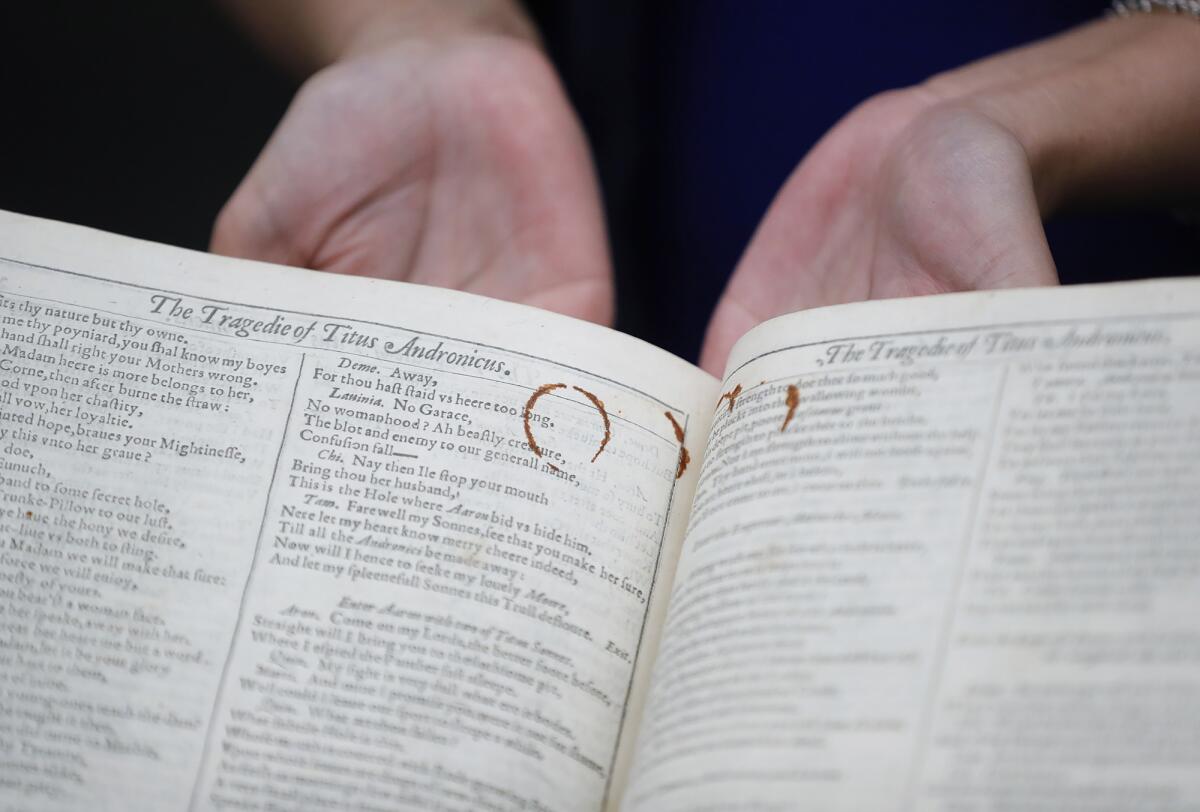
All the latest on Orange County from Orange County.
Get our free TimesOC newsletter.
You may occasionally receive promotional content from the Daily Pilot.






